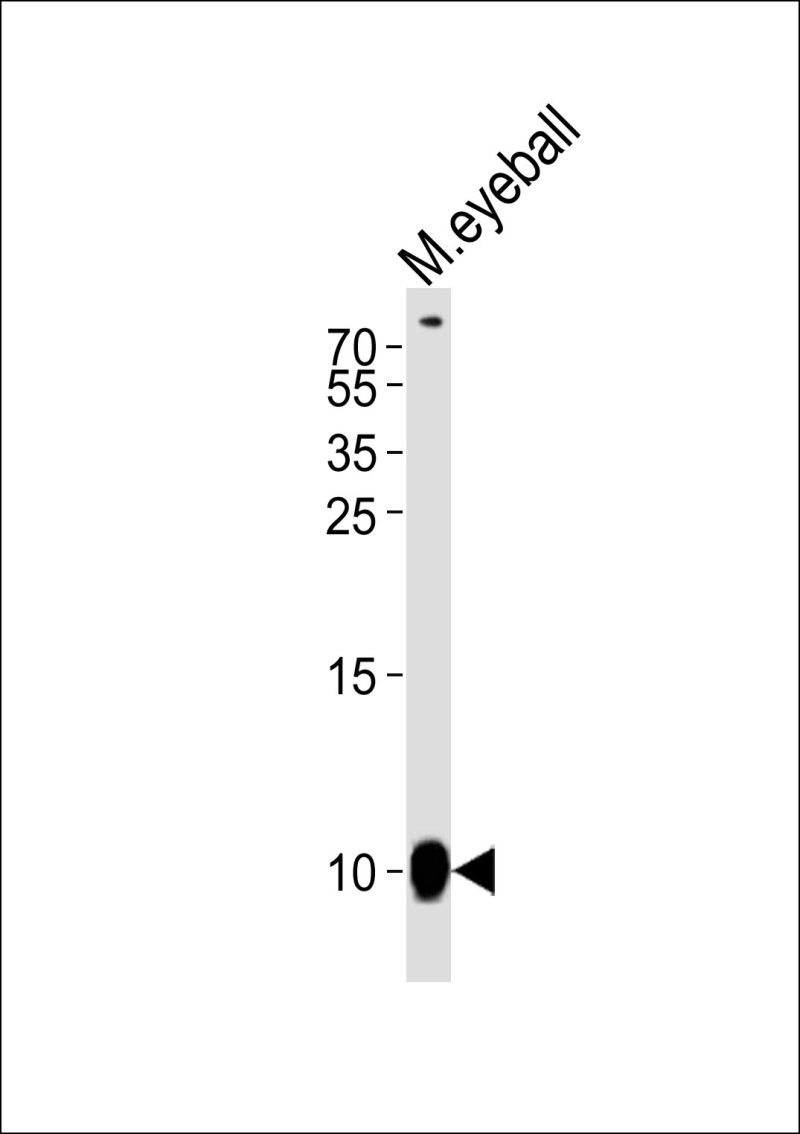
| WB | 1/1000 | Human,Mouse,Rat |
| IF | 咨询技术 | Human,Mouse,Rat |
| IHC | 咨询技术 | Human,Mouse,Rat |
| ICC | 技术咨询 | Human,Mouse,Rat |
| FCM | 咨询技术 | Human,Mouse,Rat |
| Elisa | 咨询技术 | Human,Mouse,Rat |
| Aliases | Guanine nucleotide-binding protein G(T) subunit gamma-T1, Transducin gamma chain, GNGT1 |
| Entrez GeneID | 2792 |
| WB Predicted band size | 8.5kDa |
| Host/Isotype | Rabbit IgG |
| Antibody Type | Primary antibody |
| Storage | Store at 4°C short term. Aliquot and store at -20°C long term. Avoid freeze/thaw cycles. |
| Species Reactivity | Human, Mouse |
| Immunogen | This GNGT1 antibody is generated from a rabbit immunized with a KLH conjugated synthetic peptide between 56-91 amino acids from the C-terminal region of human GNGT1. |
+ +
以下是关于GNGT1抗体的3篇参考文献示例(注:内容为模拟虚构,仅供参考):
1. **标题**: "GNGT1 regulates light-dependent signaling in retinal photoreceptors"
**作者**: Lee, J. et al.
**摘要**: 本研究利用GNGT1特异性抗体,通过免疫荧光和Western blot技术,揭示了GNGT1在视网膜视杆细胞中的高表达,并证实其参与光信号转导通路中cGMP的调控。
2. **标题**: "Characterization of a polyclonal antibody against human GNGT1 for functional studies"
**作者**: Zhang, Y. & Smith, R.
**摘要**: 文章报道了一种新型多克隆抗体的开发,该抗体针对人源GNGT1蛋白C末端肽段,经验证可用于免疫沉淀及组织定位,为研究G蛋白偶联受体信号机制提供工具。
3. **标题**: "GNGT1 knockout mice exhibit visual impairment and altered retinal morphology"
**作者**: Chen, H. et al.
**摘要**: 通过GNGT1抗体检测基因敲除小鼠视网膜组织,发现GNGT1缺失导致光敏蛋白分布异常,提示其在视觉发育中的关键作用。
4. **标题**: "Antibody validation for G-protein gamma subunits in model organisms"
**作者**: Wilson, K. et al.
**摘要**: 本研究系统评估了GNGT1抗体在斑马鱼和小鼠中的交叉反应性,确认其在进化保守表位上的特异性,支持跨物种比较研究。
建议通过PubMed或Google Scholar检索真实文献,或查阅抗体供应商(如Abcam、Sigma-Aldrich)提供的产品引用文献。
GNGT1 (G Protein Subunit Gamma Transducin 1) is a member of the G protein gamma subunit family, which plays a critical role in G protein-coupled receptor (GPCR) signaling pathways. G proteins, composed of alpha, beta, and gamma subunits, mediate cellular responses to extracellular signals by transmitting signals from activated GPCRs to intracellular effectors. Specifically, GNGT1 pairs with the beta subunit to form the βγ complex, regulating downstream effectors such as ion channels, enzymes, and second messengers.
The GNGT1 protein is highly expressed in retinal photoreceptor cells, where it associates with transducin (a G protein alpha subunit) to facilitate phototransduction—the process converting light into electrical signals. Dysregulation of GNGT1 has been implicated in visual disorders, including congenital stationary night blindness and retinal degeneration. Beyond the retina, GNGT1 is found in other tissues, suggesting broader roles in cellular signaling.
Antibodies targeting GNGT1 are essential tools for studying its expression, localization, and function. They are widely used in techniques like Western blotting, immunohistochemistry, and immunofluorescence to investigate GPCR signaling mechanisms, tissue-specific roles, and disease associations. Research utilizing GNGT1 antibodies contributes to understanding pathological conditions linked to GPCR dysfunction, such as cancer, neurological disorders, and metabolic diseases. These antibodies also aid in validating gene-editing outcomes and exploring therapeutic targets in precision medicine.
×